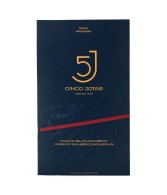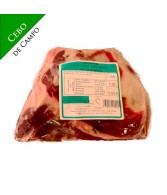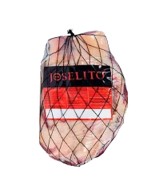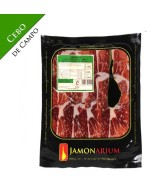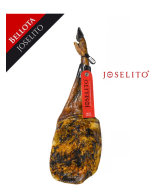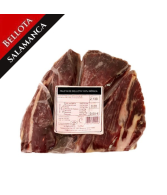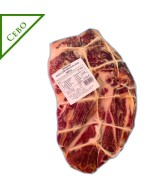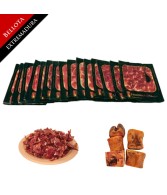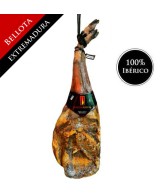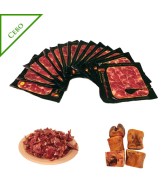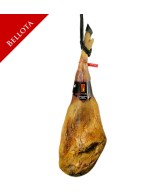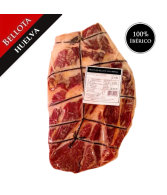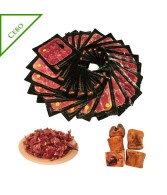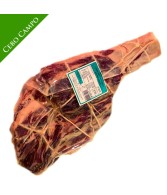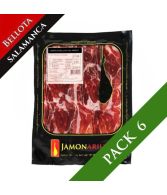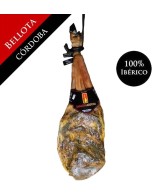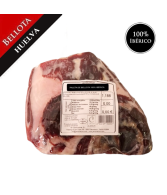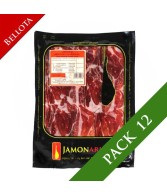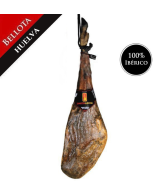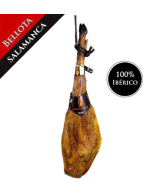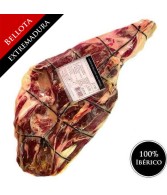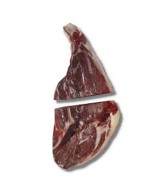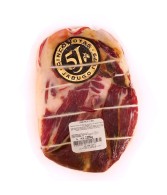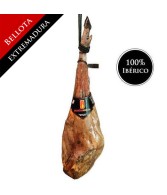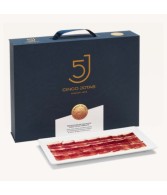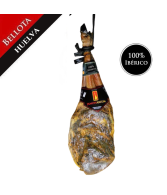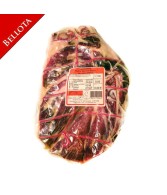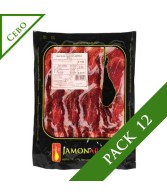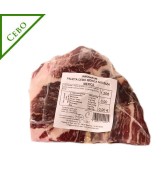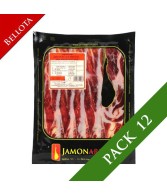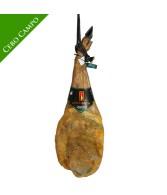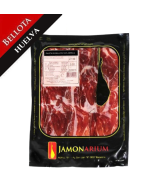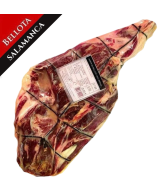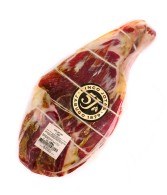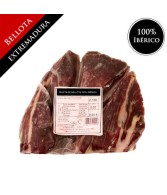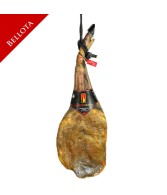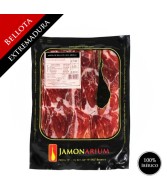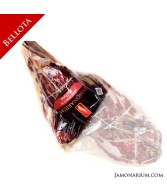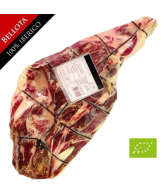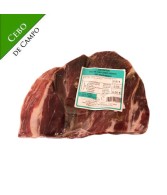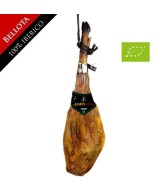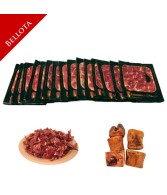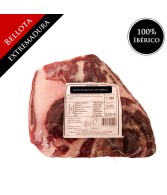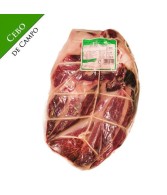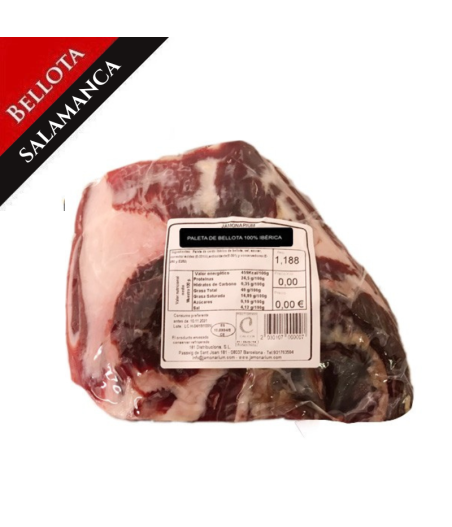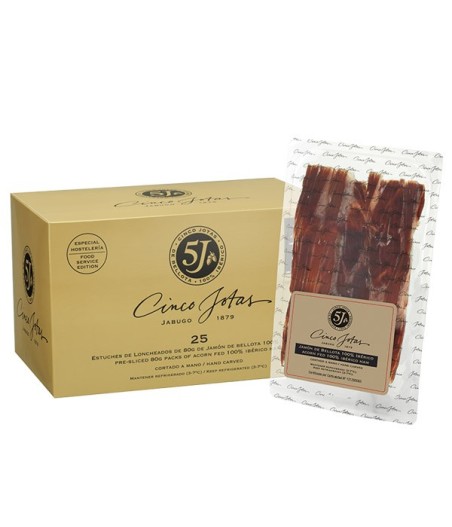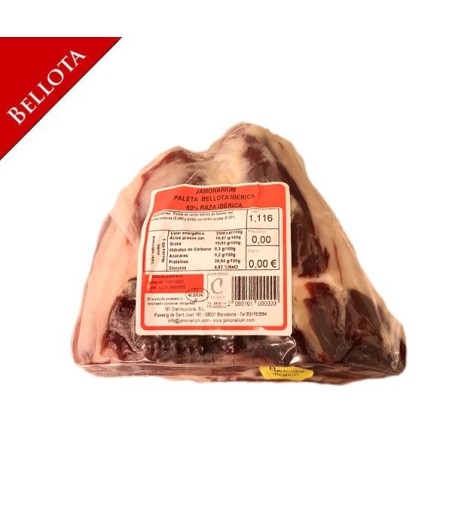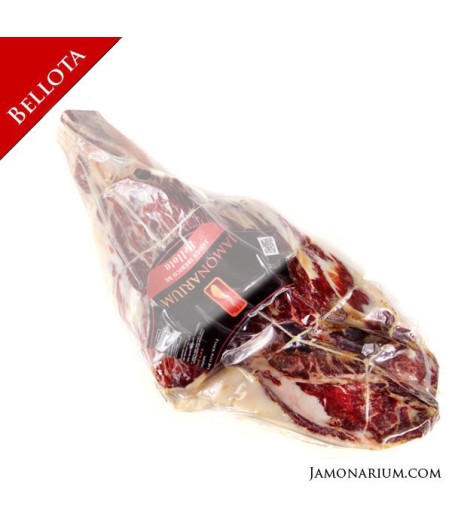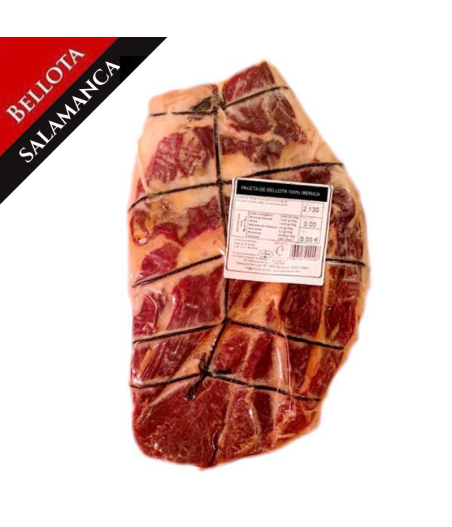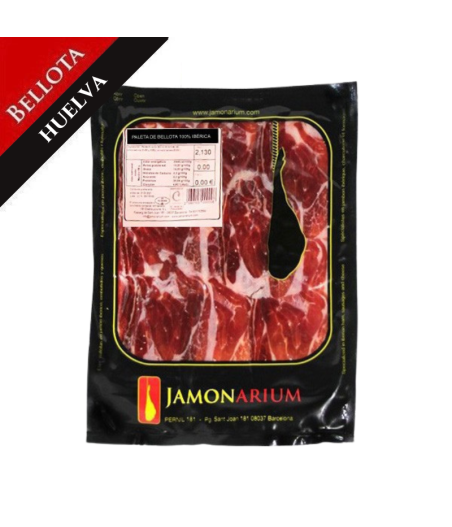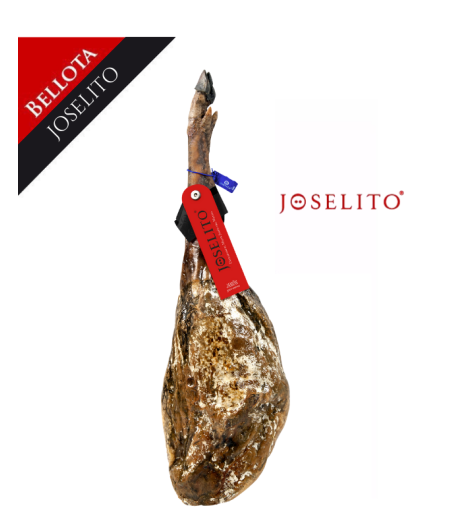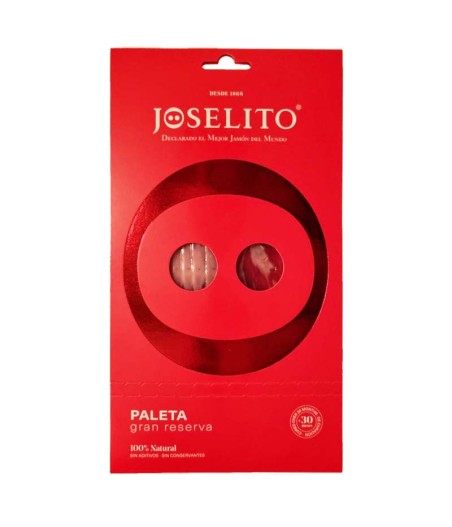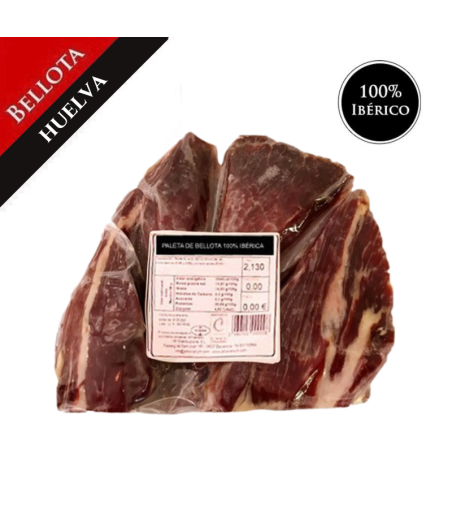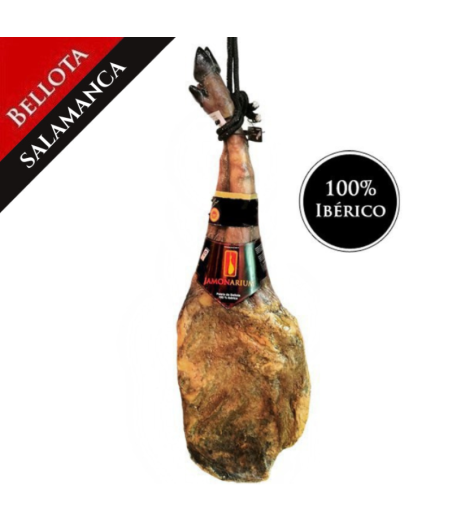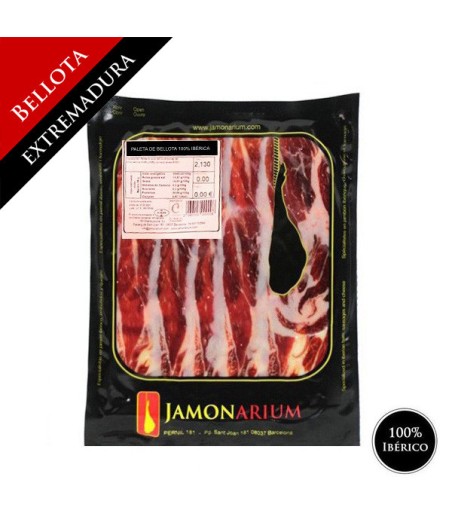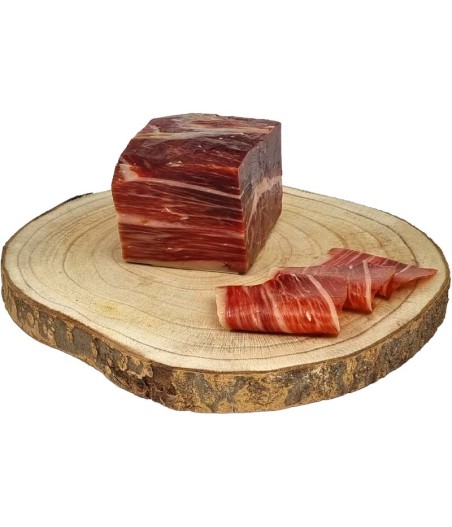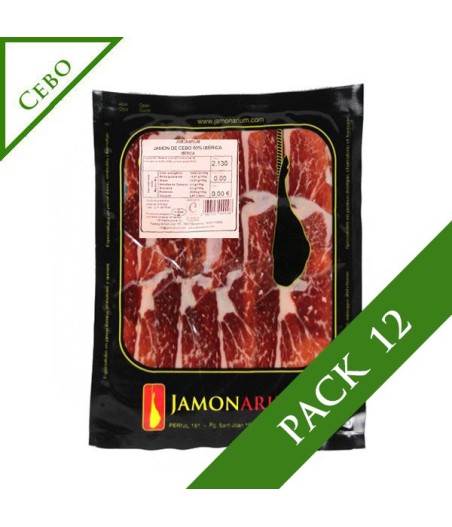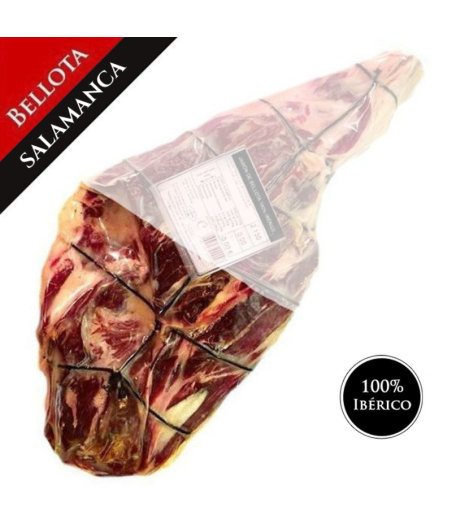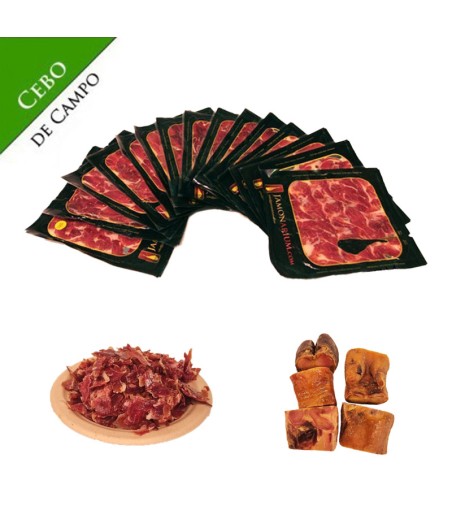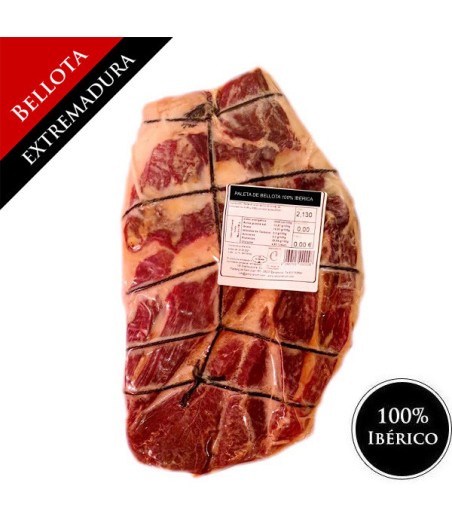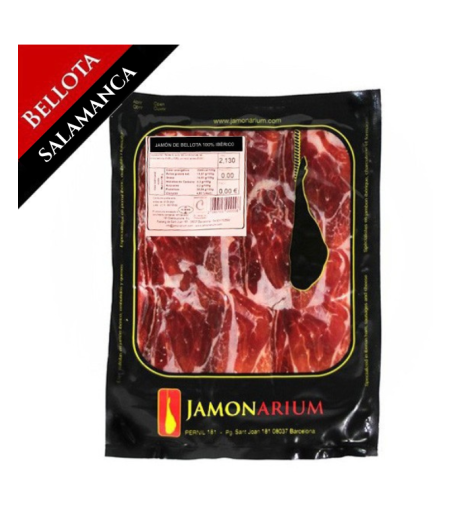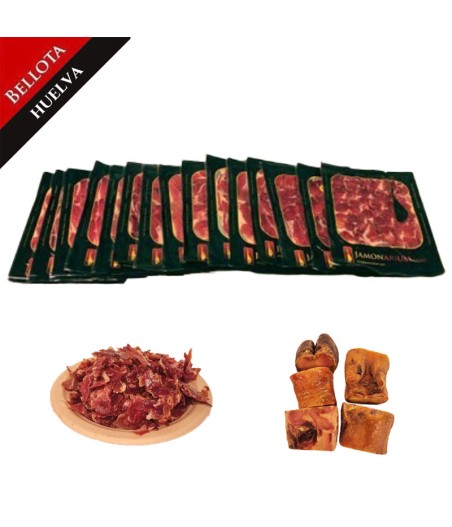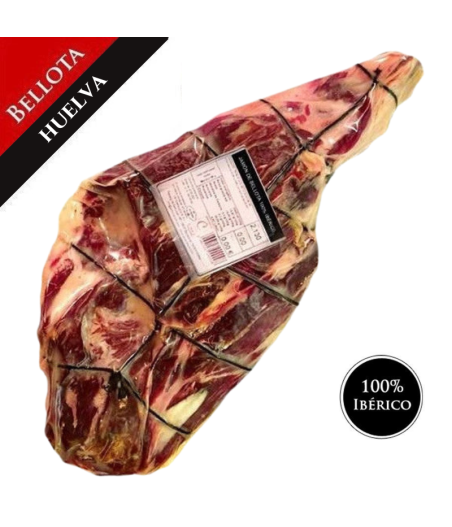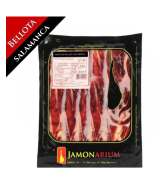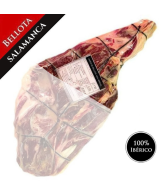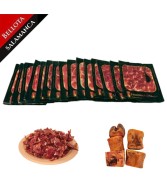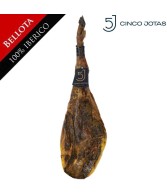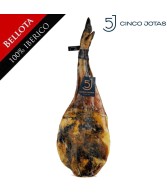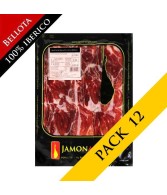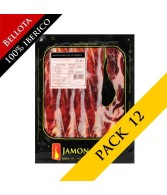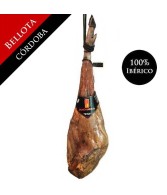Ibérico ham
Our Iberian hams
The Iberian ham produced in Spain is famous worldwide thanks to its quality and characteristic flavour. This product is highly valued per important cooks from all over the world and it is served in some of the best restaurants of the world. Behind each piece of ibérico ham and shoulder, there are some strict requisites should be accomplished,such as minimum curing time, breed purity, feed of the pigs and strict quality controls.
The main producing areas of iberico hams and shoulders are placed at southern and south-western Spain. Those areas should accomplish some specific requisites, as the sort of pastures where pigs are raised, pasture areas, weather, etc. Weather, geographical and orographical characteristics in the production areas are very important for the hams production and drying as those factors are determining to get its characteristic quality.
1. Characteristics of Iberian ham
Iberian ham has very specific characteristics that make it easy to distinguish it from Serrano hams.
1. Iberian ham comes from native Iberian pigs from the Iberian Peninsula.
2. The meat has a high rate of infiltrated fat in the muscle mass. This may vary depending on how many kilometers they walk looking for food.
3. Thanks to the high percentage of the infiltrated fat in the muscle mass, the meat has an oily texture. This makes the Iberian ham to have such a long and intense flavor.
4. All Iberian hams must have a minimum percentage breed of 50%. The percentage of breed will be determined by the percentage of Iberian breed from their parents.
5. The pastures in which the pigs are raised must have specific conditions in terms of extension of land, types of trees for the pigs to obtain acorns and distance between the watering points.
6. Iberian ham has many health benefits. It is very rich in protein, vitamins B1 and B12 and minerals, as well as good HDL fats that contribute to cardiovascular health and to make cholesterol lower.
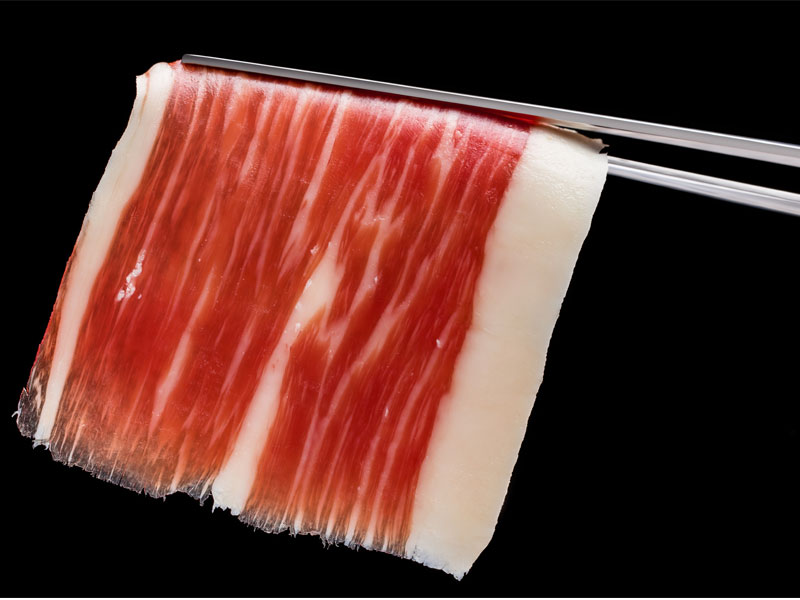
2. Production of Iberian ham
Iberian hams are raised in the pastures. The pastures in which the pigs are raised are mainly located in the area of Extremadura, although we can also find pastures in other areas of southwestern Spain.
The pastures consist of holm and cork oaks forests, perfect for the Iberian pigs to get into the montanera period and carry out the pig's fattening period. It is in these pastures where the pigs live in freedom until they are slaughtered, and the maturation period begins.
Dehesas are located in the southwestern part of Spain due to the area's continental Mediterranean climate, with hot, dry summers and long, mild winters, making it ideal for grazing Iberian pigs.
Once the pig has been slaughtered, the maturation period of the ham begins. Firstly, the salting period is carried out, in which the hams or shoulders are buried in sea salt, alternating layers of hams with layers of salt. Subsequently, we proceed to the settling phase, which consists of the salt being distributed evenly throughout the piece. This process is carried out in cold rooms at a controlled temperature, although it can also be carried out in natural dryers. Next is the drying phase, which has the same function as the settling phase but always takes place in natural dryers. Lastly, there is the aging phase, in which they finish their drying process naturally, hanging the pieces by weight and type. Thanks to this phase, the organoleptic characteristics of Iberian ham can be obtained.
Learn more about the period of elaboration of the Iberian ham
3. Feeding of Iberian ham
We find 3 types of Iberian hams according to the feeding they have had during the fattening season.
Iberico de cebo ham: Iberico de cebo ham has been raised intensively and has been fed on authorized feeding. The minimum curing period for Iberico de cebo shoulders is 18 months and the minimum curing period for Iberico de cebo hams is 24 months. Its label is white.
Iberico cebo de campo ham: the Iberico cebo de campo ham has been raised in half-freedom and has been fed both with authorized feed and on some pastures and acorns. The minimum curing period for cebo de campo Iberian shoulders is 18 months and the minimum curing period for cebo de campoIberian hams is 24 months. Its label is dark green.
Bellota Iberian ham: Bellota Iberian ham has been raised in freedom, and has been fed on acorns and pastures. The minimum curing period for Bellota Iberico shoulders is 24 months and the minimum curing period for Bellota Iberico hams is 36 months. It is distinguished with the red label if the ham is 50% Iberico de bellota and with the black label if the ham is 100% Iberico de bellota Pata Negra.
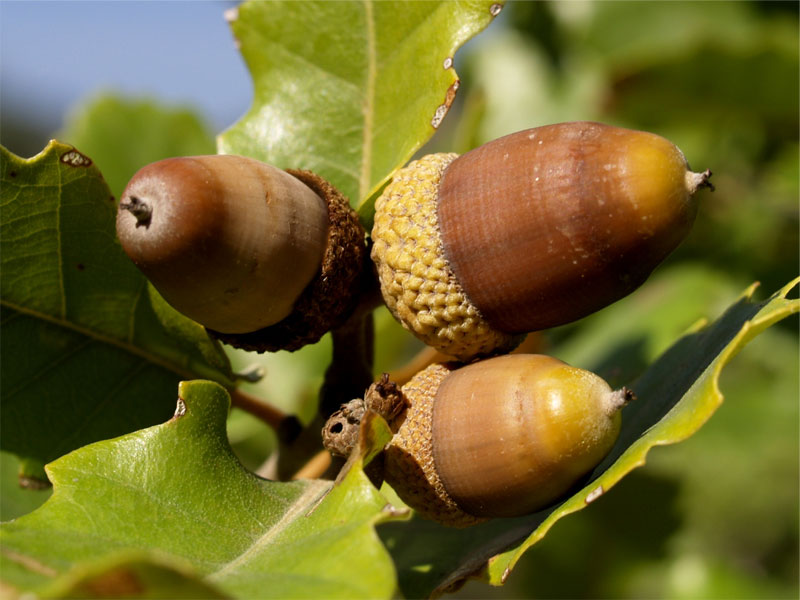
Our Iberian hams
4. Pata Negra 100% Iberico Bellota Ham
The Pata Negra 100% Iberico Bellota Ham is popularly considered the highest quality Iberico ham. This type of ham comes from 100% pure Iberian pigs whose parents are 100% Iberian. The most characteristic of these hams is the black color of their hoof.
Pata Negra 100% Bellota Iberico ham has a stylized leg and a thin and elongated caña. The meat is purple-pink in color and has a good index of fat infiltrated into the muscle mass, thanks to the long kilometers traveled by the pigs looking for food.
5. Iberian ham Elaboration areas
The main iberico hams producing areas are the following: Jabugo (Huelva), Extremadura, Guijuelo (Salamanca) and Los Pedroches (Córdoba).
5.1. Extremadura, pastures paradise
Extremadura is the main producing area of iberico hams and shoulders, main reason why Designation of Origin Dehesa de Extremadura has been created. This is one of the most depopulated areas in Spain and extensive pasture areas, perfect for the iberian pig breeding, consecrated to produce the ibérico bellota ham. The ham Designation of Origin Dehesa de Extremadura is characterised by its sweet and fruity flavour, slightly strong, perfect for slightly intense flavour lovers.
Weather and geography
This area has a continental weather, characterised by dry, hot summers with few rainfalls, and long and soft winters, with heaviest rainfalls than in summer. The geography of this area is characterised by its mountain ground placed in Sistema Central, next to Sierra de Gredos, Sierra de Béjar and Sierra de Gata, Sierra Morena and Montes de Toledo. Its average altitude is 400 metres over the sea and abundant rivers, which Tajo and Guadiana are the most important.
Our Extremadura hams
Pasture areas
About the pasture areas, those are mainly conformed by corks and oaks, distributed along the production area in D.O. Dehesa de Extremadura, which happens to meat with Extremadura. Its ecosystem is considered among the better preserve in Europe as there are different three species and pig breeds, as iberian pig. Grounds are conformed by siliceous materials, mainly formed by granitic rocks, slate and sandstone.
The pastures are placed in Cáceres and Badajoz and they have around a million hectares. Those places are perfect to encourage iberian pig exercise while the pig consume acorns. Thanks to the specificity of the iberian pig breed, the exercise and breed; the fat is infiltrated in the meat, having a juicy lean as a result. Due to its high number of hectares, the exercise of the pig is encouraged, and the infiltrated fat percentage in muscle will be higher.
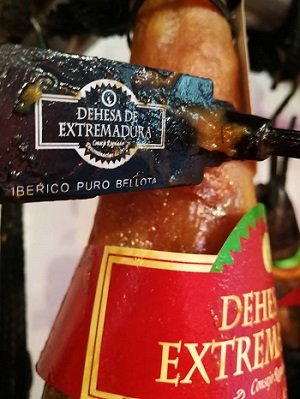
5.2. Salamanca, everything about Guijuelo
In the area of Guijuelo (Salamanca) iberico ham pieces produces some of the best valued pieces in Spain. In this area, there is the Designation of Origin Guijuelo, one of the better known in our country. It has been the first Designation of Origin of ibérico ham in Spain, encouraged by the overproduction of ibérico ham pieces in the 1980s with the aim of protect the pieces produced in that area. The Designation of Origin of Guijuelo is characterised by its soft, fruity and sweet flavour.
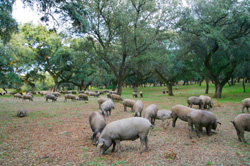
Weather and geography
The weather in Salamanca is characterized by being Mediterranean continentalized, as it has very cold winters and very hot and dry summers, perfect for the breeding and cured of the ibérico ham. The precipitations are not abundant and the average temperature varies between 25º and 35º. Geography and orography of the area is characterised by its mountainous landscape, surrounded by Sistema Central, Montes de Toledo and Sierra Morena, contrasting with some plains, valleys and little Sierras. Its average altitude is of 1000 meters over the sea, creating the perfect weather for the drying of the pieces.
Pasture area
Regarding the pasture areas, they are placed in Salamanca, Toledo and Zamora, close to Gredos and Béjar sierras. Hams curying area is placed southwest Salamanca, conformed by 78 municipalities placed at south-western Salamanca. Mediterranean forest groves, mixed with corks and oaks encourage the preservation of Guijuelo's ecosystem. About the ground materials, they are mainly conformed by siliceous rocks, made by granitic, slates and sandstone rocks.
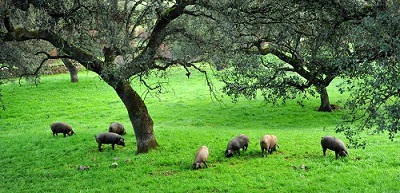
Ibericos industry in Salamanca
Guijuelo is placed in Salamanca. There are numerous companies of iberian products. Few years ago, this industry become one of the most important in Guijuelo, being the 65% of the working population there.
Our hams from Guijuelo
5.3. Jabugo, famous worldwide
Jabugo is placed in Huelva and the famous "Jamón de Jabugo" is produced there, on of the most important in Spain. Traditionally, ibérico ham was sometime wrongly named as "Jamon de Jabugo" due to its high popularity. This ham used to be protected by the D.O. Huelva, becomed D.O. Jabugo in 2017. Designation of Origin of Jabugo's ham is characterized per its strong flavour and the less fruity among ibérico bellota hams.
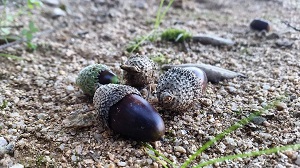
Weather and geography
Its weather is characterised per its hot summers and Easter and winter with heavy rainfalls, giving more balance between temperatures and humidity of drying places and cellars. Geography and orography are characterised by rough mid-mountain landscape and average altitude of 572 metres over the sea.
Elaboration area and its characteristics
The elaboration area is formed by 31 towns inside La Sierra, at north-western Huelva. The flora of the area is characterised by being leafy, mainly conformed by corks, oaks, pines and chestnut groves, among others. In Huelva is our most famous Designation of Origin worldwide, even being confused with ibérico ham. This Designation of Origin gives a great recognition to ibérico hams in Jabugo, as well as a great recognition of pieces, guaranteeing its quality.
Our Jabugo hams
5.4. Los Pedroches, the jewel of Cordoba
The Designation of Origin Los Pedroches is placed in Córdoba. This Designation of Origin has been created in 2010, which is the most recently created Designation of Origin in our country, but the cattle-raising tradition started long ago. Furthermore, in 2002 this area of Sierra Morena has been declared "Biosphere Reserve" by UNESCO. Hams protected by Designation of Origin Los Pedroches are characterised by its sweet flavour, greasy texture and characteristic aroma of ibérico bellota hams.
Our hams from Los Pedroches
Weather
Its Mediterranean weather and southern sub-plateau, with cold winters and hot summers. Its average temperature is around 18º-19º with frequent heavy rainfalls, which contributes to the drying process of the pieces.
Production area
About the production area of Los Pedroches, it is placed in Córdoba, joining Ademuz, Hornachuelos, Posadas, Obejo, Montoro, Villaharta and Villaviciosa de Córdoba.
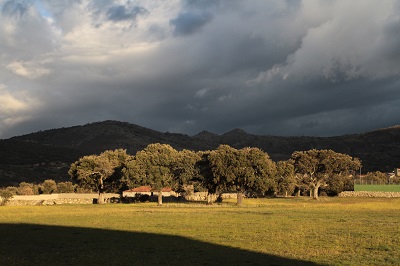
 4,9 / 5
4,9 / 5 





